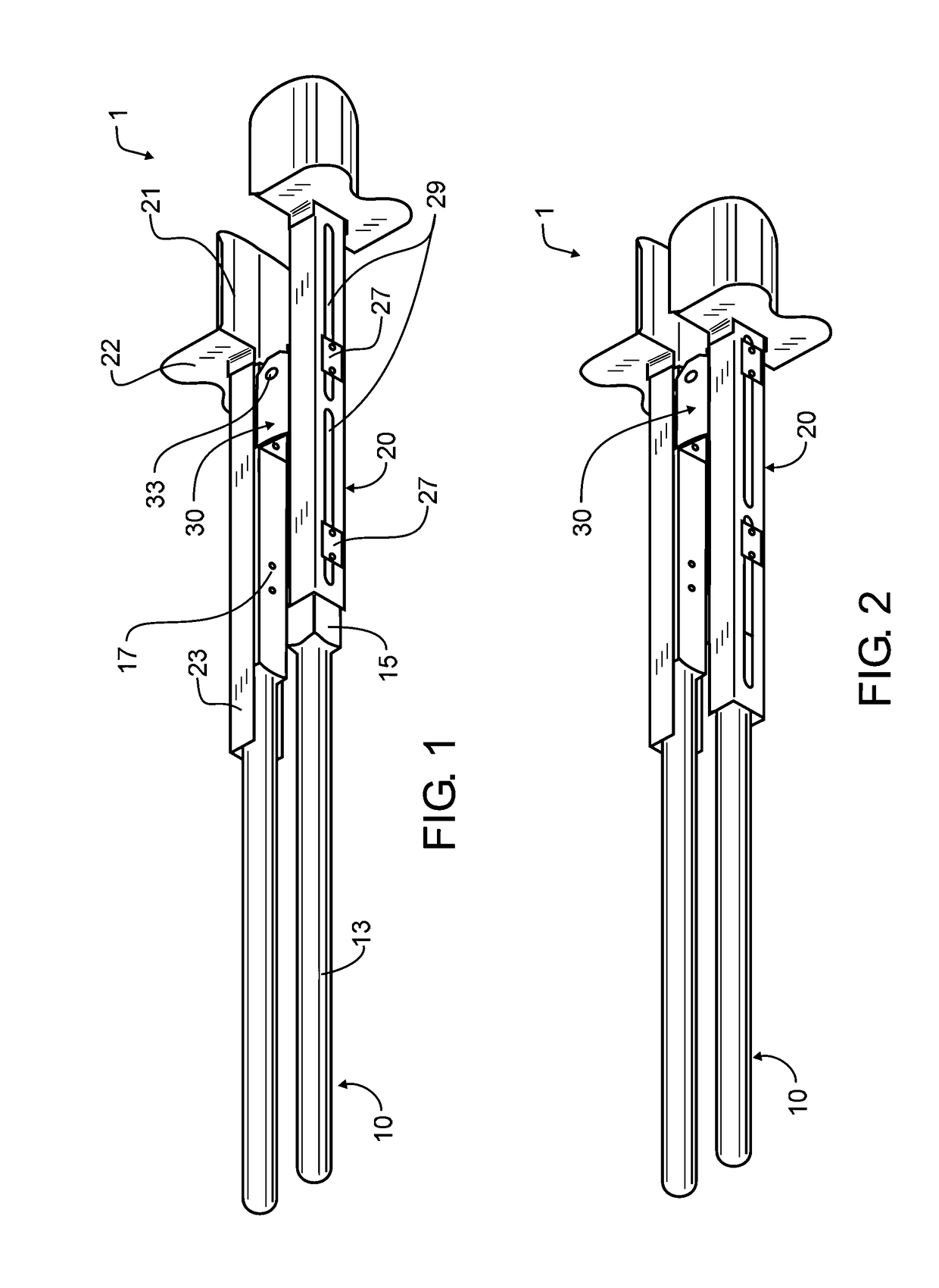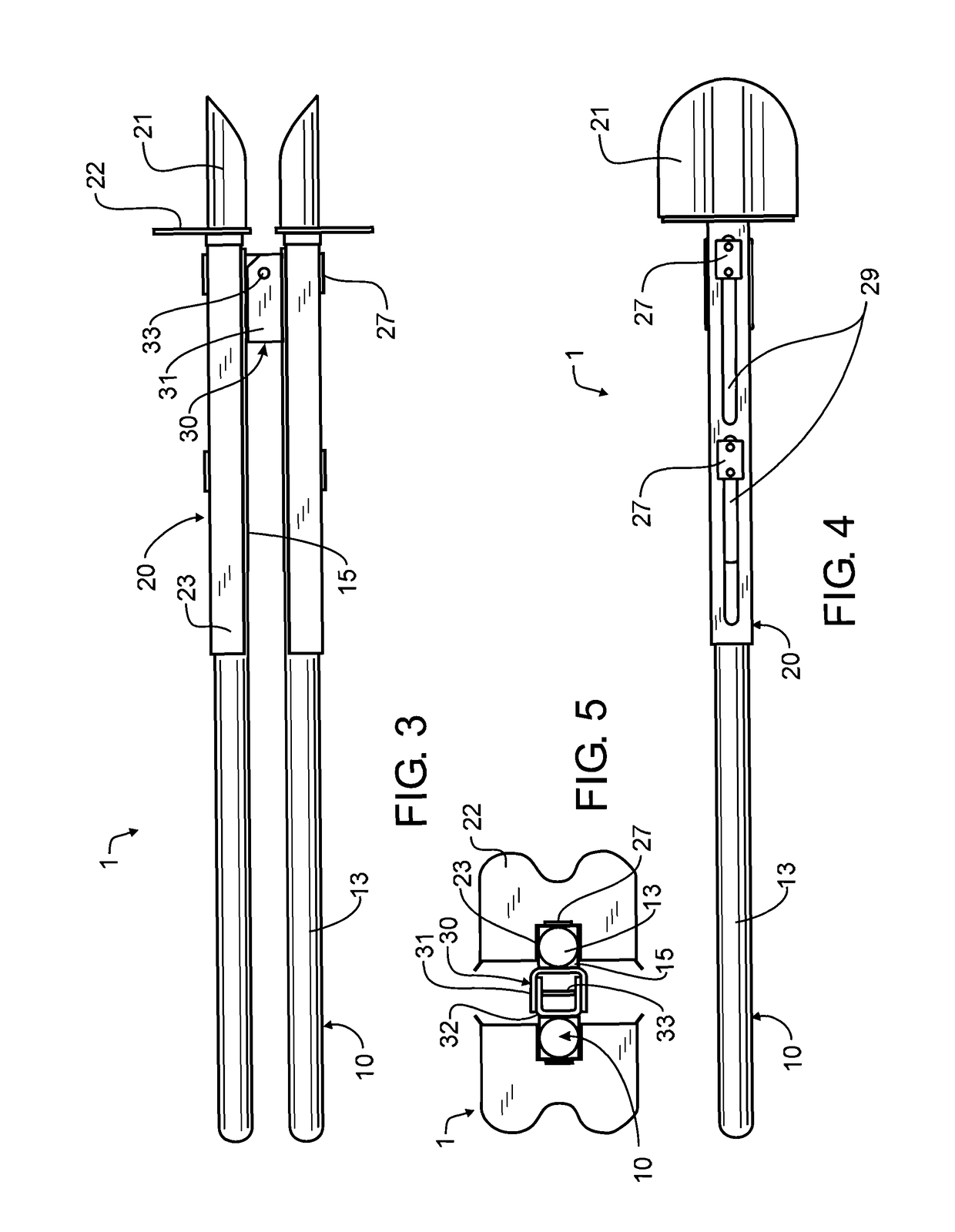Bulb, plant, and seedling digging tool
a technology for digging tools and plants, applied in the field of agricultural and horticultural tools and implements, can solve the problems of inability to achieve clean or consistent size holes with simple shovels, and many to not pursue this type of gardening, and achieve the effects of convenient digging and planting, sufficient mechanical advantage, and effective operation
- Summary
- Abstract
- Description
- Claims
- Application Information
AI Technical Summary
Benefits of technology
Problems solved by technology
Method used
Image
Examples
Embodiment Construction
[0025]Manifested in a preferred embodiment, the present invention provides a bulb, plant, and seedling digging tool that is intuitive to use, relatively light weight, and may be operated by a person with limited arm strength entirely from an upright position. In a preferred embodiment of the invention illustrated in the Figures, a bulb, plant, and seedling digging tool 1 is comprised of a handle assembly 10, a shovel assembly 20, and a hinge 30. Handle assembly 10 may for exemplary and non-limiting purposes comprise a common wooden handle commercially sold for a variety of purposes, having a generally cylindrical hand-grasping portion 13, and a rectangular lower handle member 15 distal to hand-grasping portion 13. A preferred handle material may for exemplary purposes only, and not solely limiting the invention thereto, be selected from hollow or solid compositions of wood, metals, plastics with or without reinforcing fiber and including fiberglass and similar composites, or other s...
PUM
 Login to View More
Login to View More Abstract
Description
Claims
Application Information
 Login to View More
Login to View More - R&D
- Intellectual Property
- Life Sciences
- Materials
- Tech Scout
- Unparalleled Data Quality
- Higher Quality Content
- 60% Fewer Hallucinations
Browse by: Latest US Patents, China's latest patents, Technical Efficacy Thesaurus, Application Domain, Technology Topic, Popular Technical Reports.
© 2025 PatSnap. All rights reserved.Legal|Privacy policy|Modern Slavery Act Transparency Statement|Sitemap|About US| Contact US: help@patsnap.com



